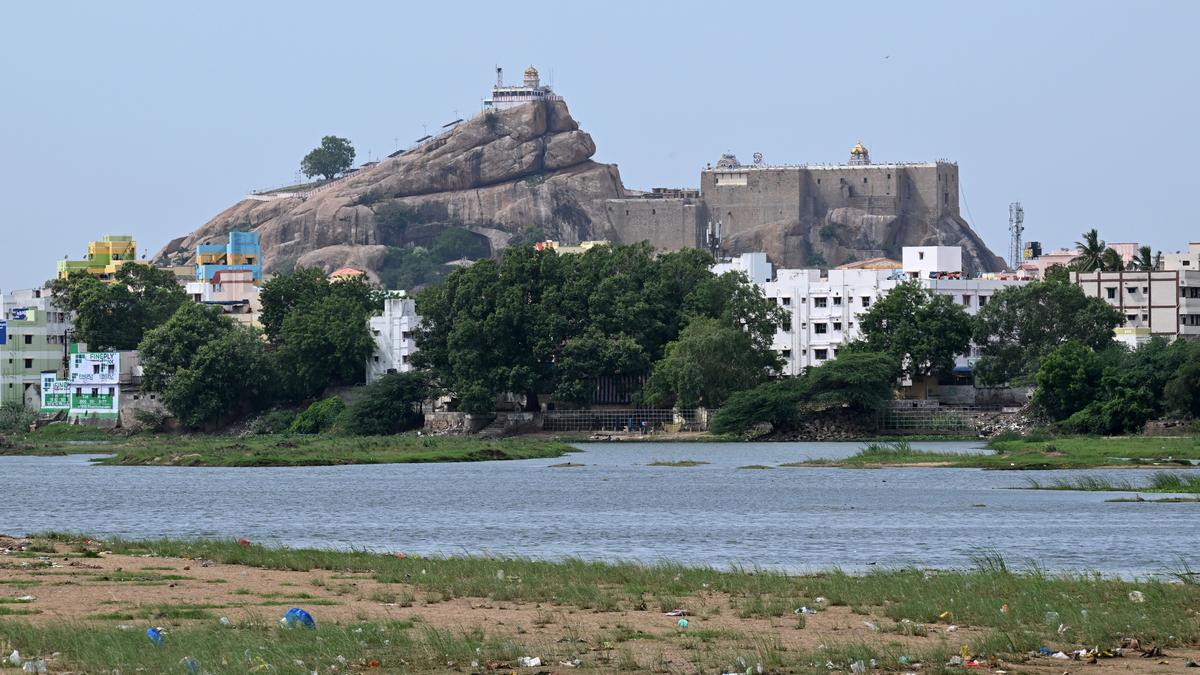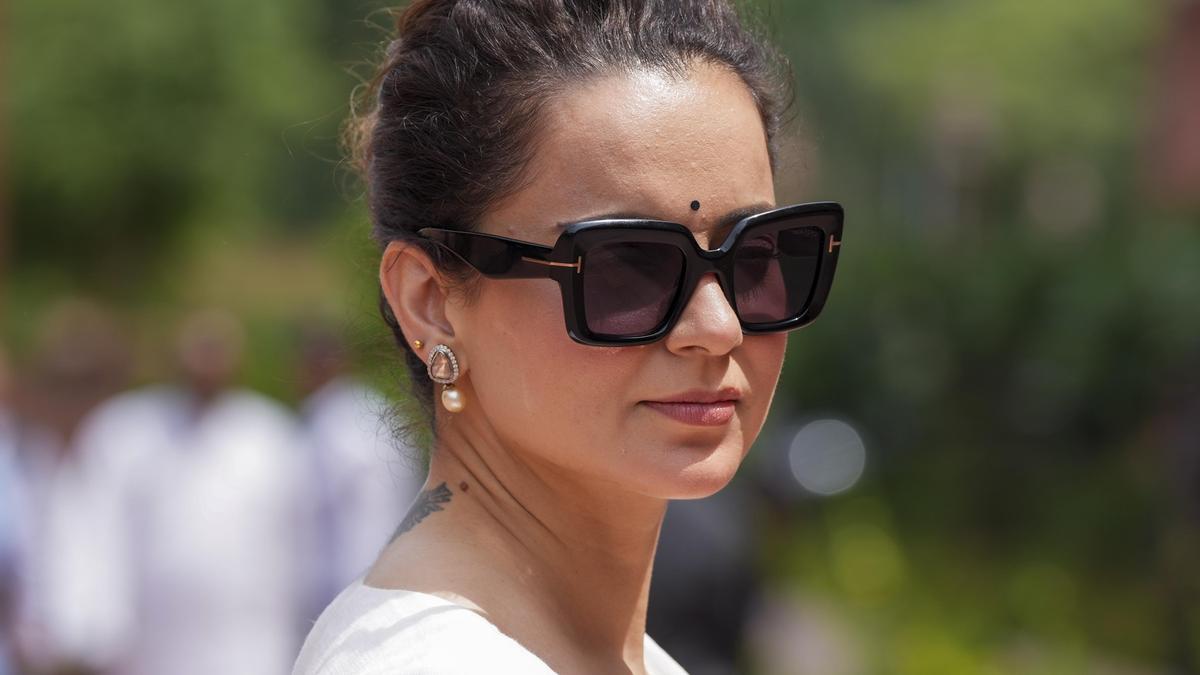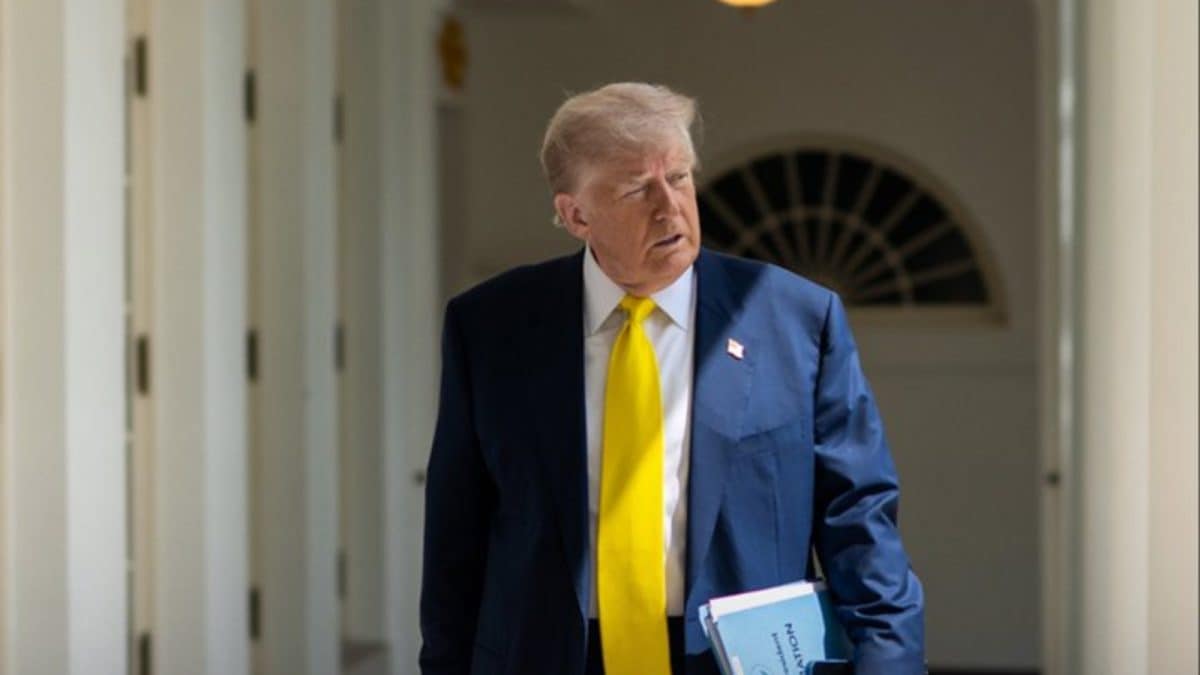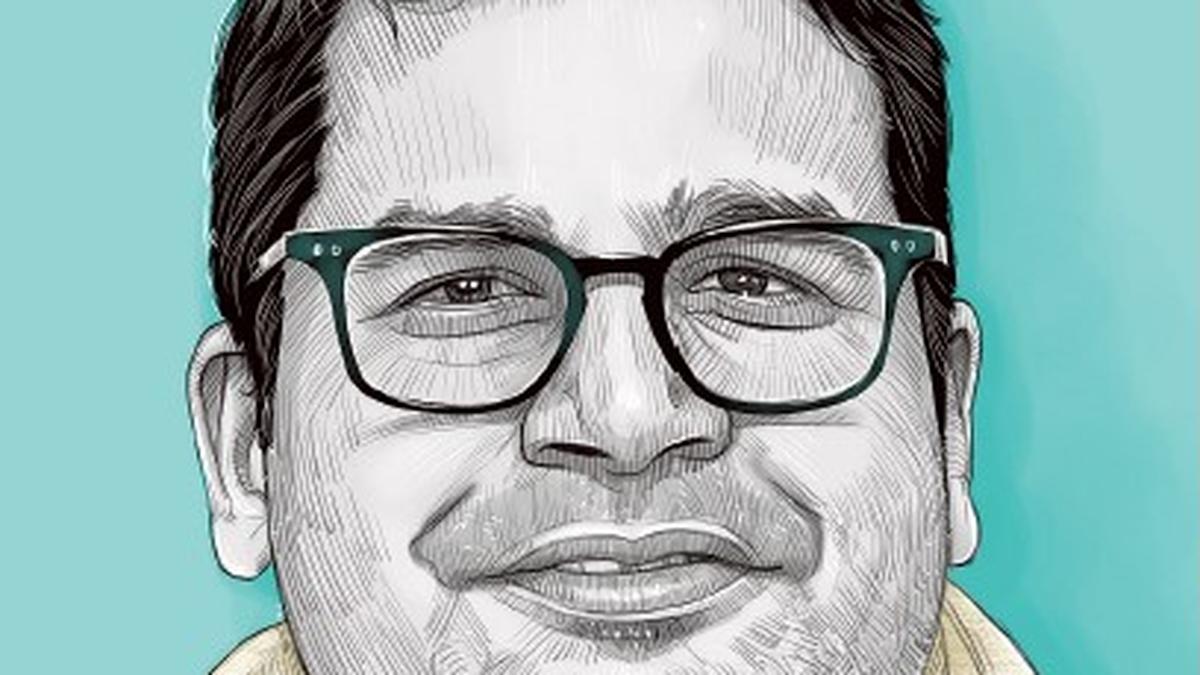SPOTLIGHT
Nestled in a corner of the Madhav National Park in the northern tip of Madhya Pradesh’s Shivpuri district, is Binega village. The village is home to about 60 Sahariya families, a notified Scheduled Tribe, that has been listed as a Particularly Vulnerable Tribal Group (PVTG). The families mainly survive on daily-wage labour. Less than 20 metres from the banyan tree marking the entrance to Binega village is the criss-crossed wire fence of the outer boundary of the Shri Paramhans Ashram, where Uttar Pradesh-based Swami Adgadanand Maharaj’s Yatharth Geeta is followed, taught, and practised. The forest’s green shrubbery half-hides the fence.
The decade shifts around depending on who tells the story, but devotees of the Ashram recount its beginning to be between 30 and 40 years ago, when a “Sant” known as Nanhe Maharaj arrived in the forests on his travels and found it to be a “chaste and pure land” to meditate. “When they first came, it was just one Swamiji and four or five of his disciples. They kept to themselves and eventually wanted to build a place for meditation and a temple,” Sugrabai Adivasi, one of the elders in Binega, says, sitting on the khatiya on her porch.
“The first Maharajji was nice to us. He asked us to help them build their premises. He paid fair wages. We agreed. We laid the foundation stones for some of the first buildings inside that Ashram,” says Sugrabai, staring beyond the banyan tree, towards the fence. “It has been around 20 years now since we stepped into the Ashram or went close to it. The Ashram, though, has crept up on us in these years,” she says. His successor was Swami Bajranand Maharaj who came in around 2000, say villagers. The newest successor is Swami Pathranand Maharaj, who was prominent through his Bajranand’s leadership.
As the Ashram expanded in size, recognition, and popularity, Sugrabai and her neighbours in Binega village were connected to 24-hour power lines, a primary school was built for the village, and in 2016, the Union government sanctioned pucca homes for them under its Pradhan Mantri AWAS-Gramin scheme. In 2017, the villagers of Binega acquired individual forest rights (IFR) titles under the landmark Forest Rights Act, 2006. This recognises forest-dwelling communities’ generational rights on forests. They started receiving instalments under the housing scheme and started building their homes.
The same year, the Ashram’s expansion was first flagged as encroachment by the local Forest Department, according to a preliminary offence report from 2017 recorded by a forest guard. This report accused Swami Pathranand of the Binega Paramhans Ashram of encroaching upon and making “unauthorised constructions” on around 11.5 hectares of community forest land in violation of what the Forest Conservation Act, 1980, provided for. The villagers of Binega already held community forest rights over parts of this forest land under the 2006 law.
Individual vs community rights
It is two days after Diwali; the air is still warm. Sugrabai’s sons are performing a Govardhana puja ceremony just as the sun is setting over the Madhav National Park. Leading them in the ceremony is Amar Singh, Sugrabai’s oldest, in a white Bharatiya Janata Party T-shirt featuring Prime Minister Narendra Modi and Minister Shivraj Singh Chouhan. Sugrabai sits down outside her home; behind her is the facade of the unfinished construction of what was supposed to be her pucca home under the PM-AWAS scheme.
Within months of starting construction of their government housing, a Bench of the Madhya Pradesh High Court issued a status quo order on petitions filed by the Ashram’s Swami Pathranand, alleging that it was the villagers who were violating the Forest Conservation Act, 1980, referring to their PM-AWAS homes as “unauthorised construction”, claiming it was on community forest land. Soon, Swami Pathranand had initiated parallel proceedings in the National Green Tribunal, which, in 2019, directed State authorities to remove the houses being constructed by the villagers, prompting Sugrabai to approach the Supreme Court of India.

Sugrabai's sons performing Govardhan puja at their house, two days after Diwali. | Photo Credit: SHASHI SHEKHAR KASHYAP
In the ongoing Supreme Court proceedings, the Ministry of Tribal Affairs has cited the 2017 forest offence report to say that Swami Pathranand’s forest violations were “self-explanatory”. The villagers held the land under Individual Forest Rights titles, and the villagers’ entitlement to benefit from the AWAS scheme “is an extension of their recognised rights under the FRA”.
It further stated that in 2010, a community forest rights (CFR) title was vested in Binega’s gram sabha members, including Sugrabai, on parts of the forests where the Ashram has now expanded into. This was despite the pro-forma for the title providing for only the name of the gram sabha and not individuals. In May 2015, the Union government had submitted that Swami Bajranand was included in the CFR title alongside the gram sabha members.
Now, District officials say that this is a lapse. “The District Level Committee under the FRA is initiating the process to remove the name of Swami Bajranand and just keep the name of the gram sabha on the title,” says an official, who does not want to be named. But this has, at the same time, triggered a “review” by district authorities of the Individual Forest Rights titles of Binega’s residents as well. The official says, “There is an argument to be made for review given that the PM-AWAS sanction was granted before the IFR title was issued. So, all procedures in the grant of the IFR titles are being examined.”
Sugrabai says that by a combination of two factors, the Ashram plans to remove them from their land: by claiming the individually-owned land — on which the government-sanctioned housing was to come up — is part of community forest land, along with the fact that the Swami’s name is on the community land document.
The Ashram premises
The main entrance to the Shri Paramhans Ashram in Binega opens into an expansive campus. Inside, runs a 200-metre-long cemented pathway that leads to the main temple and the samadhi sthal (memorial) of Swami Bajranand, who passed away sometime in 2020. Mango and Champa trees line this pathway, their dense foliage casting shadows. On both sides are large grounds with freshly dug soil, being readied for sowing grass, for the Ashram’s cows to graze on.
Onthe grounds just beside the main temple, Swami Pathranand, the current head Maharaj of the Ashram,is watering freshly planted saplings with a hose. “I will not speak,” he says, and asks a devotee to procure some prasad. He walks away.

A view of the cemented pathways and grounds inside the Ashram. | Photo Credit: SHASHI SHEKHAR KASHYAP
Netram, a slender man in his 60s, who refers to himself as a “naukar” (servant) of the Ashram, walks into the temple, brings a piece of prasad, and sits down on the floor outside the temple doors. “Maharajji has not been keeping well the last few days,” Netram says. The dispute over the Binega’s forests had begun with Swami Pathranand’s petitions accusing forest rights-holding Adivasi villagers of encroachment, first in the Madhya Pradesh High Court, and then in the National Green Tribunal.
“Do you know what the Yatharth Geeta is?” Netram asks, before answering the question himself, “It is the truest understanding of Lord Krishna’s sermon contained in the Bhagavad Gita.” He explains how aaratis and bhajan sessions are important. “The work involves everything from cleaning the pathways and temple premises and serving the needs of the Maharajji of the Ashram to sowing seeds, tending to the cattle, and watering the saplings,” Netram says.
The Paramhans Ashram in Binega is one of 11 Ashrams devoted to the teachings of Swami Parmanand Paramhans Maharajji, who lived between 1911 and 1969. The Ashrams are run and managed by the Shri Paramhans Swami Adgadanandji Ashram Trust, at the head of which is Swami Adgadanand Maharaj, the leading disciple of Swami Paramhans Maharaj, and is credited for first codifying his Guru’s teachings in the form of the Yatharth Geeta, a treatise on the Bhagavad Gita that claims to provide its “true perspective”.
In one of his books on Sanatan Dharma, Swami Adgadanand posits that all places of worship, with or without idols, even the worship of nature, can be seen as part of the same Sanatan-Arya-Hindu Dharma.
As Swami Adgadanand’s Yatharth Geeta found popularity, it was honoured with a title of “Bharat Gaurav” at the 1998 Maha Kumbh in Haridwar. Now, the book, along with other writings of the Swami is published by his trust in multiple Indian and foreign languages. A couple of years after its recognition at the 1998 Maha Kumbh, the Swamiji anointed Swami Bajranand to lead the Ashram that was just starting to develop at Shivpuri’s Binega village.
The annual bhandaras hosted by the Ashram during his time, attracted tens of thousands of devotees from Madhya Pradesh and all over the country. And in this time, the school of Yatharth Geeta also gained prominence among leaders from across the political spectrum.
Leaders like Samajwadi Party’s Akhilesh Yadav have been photographed paying obeisance to Swami Adgadanand and so has Rashtriya Swayamsevak Sangh chief Mohan Bhagwat. Soon after becoming Prime Minister, Narendra Modi too was photographed receiving a copy of the Yatharth Geeta from his mother Hiraben and copies of the book have been presented to other prominent political leaders such as Union Ministers Rajnath Singh and Amit Shah.
The villagers’ fears
Sitting outside her home in Binega, Sugrabai says, “Our real troubles began when Swami Bajranand Maharajji started handling the Ashram here. The Swami before Bajranand Maharajji, whom we only knew as Nanhe Maharajji, maintained good relations with us and the villagers of Binega,” Sugrabai continues, adjusting the bangles on her arms that are getting caught in the friction from the wrinkles on her wrists.
Recounting the early days of the Ashram in Binega, Sugrabai notes how the villagers and the Ashram had come to an understanding. “We did majdoori for them, they paid us wages and we lived peacefully. We would often visit the Ashram on special occasions like bhandaras or satsangs (religious gatherings).”
But as soon as Bajranand Maharaj took over, they did not get wages, Sugrabai says. “That is when we decided in our village that we will stop associating with the Ashram and live our separate lives,” she says, flanked by her sons and their wives. “But the Ashram would not stop its expansion,” she adds, explaining that they never thought they would come to see the Ashram as a threat to their homes, forests, and lands.
Amidst the conversation, Amar Singh’s wife, Ramdulari chips in, “On a daily basis, unknown people have come to us and asked us to leave our village and move to the nearby Chandanpura gram panchayat. But why would we go there? There is no space for us there and we don’t want to be crammed into small spaces with barely any room for our families. But under pressure, several families from our village have moved there.”
Until a resolution is found
With the Supreme Court of India now hearing Sugrabai’s appeal of the 2019 National Green Tribunal order, which called for their housing to be removed, most recent observations from the Bench hearing the matter have led to fresh anxieties in the minds of Binega’s residents about whether they will ever be able to finish building their PM-AWAS housing.
After the Union Ministry of Tribal Affairs made its position on the matter clear to the Supreme Court, pointing towards the Paramhans Ashram’s forest violations and upholding the right of Binega villagers to live on and build PM-AWAS housing on land they hold IFR titles over, the Supreme Court in an order last month observed that there remained a conflict between the Forest Rights Act of 2006 and the Forest Conservation Act of 1980, calling for the Union government to find a “convergence” between the two.
While explaining the conflict, the Supreme Court noted that while the Forest Rights Act provided for the government to undertake certain “non-forestry” activities for providing services and facilities, notwithstanding the Forest Conservation Act, it noted that these prescribed activities did not explicitly include construction of pucca housing. It directed the Union government to brainstorm on a way forward that allowed PM-AWAS housing for forest-dwellers without conflicting with the Forest Conservation Act.
Until the Union Ministries of Tribal Affairs and Environment, Forests, and Climate Change arrive at this “convergence”, legal experts and forest rights scholars have expressed concerns that the “conflict” noted by the top court had the potential to affect two of the largest programmes that the Union government currently runs for Scheduled Tribes: the PM-JANMAN, targeted towards PVTG habitations like Binega village and the DAJGUA for Scheduled Tribe villages. Both aim to uplift the communities socio-economically.
Edited by Sunalini Mathew

 2 days ago
7
2 days ago
7









 English (US) ·
English (US) ·